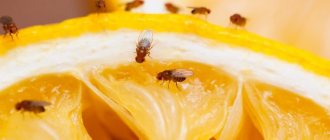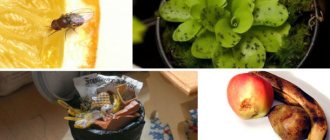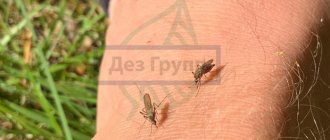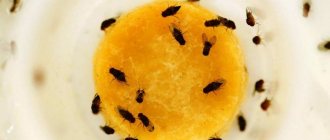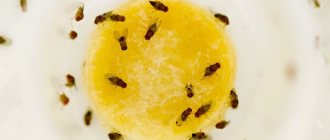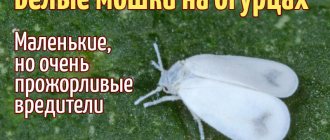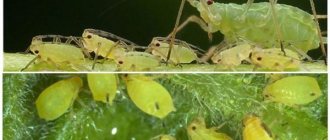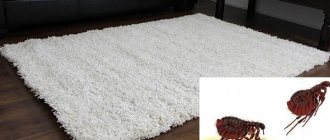Any housewife has thought about the fact that if you leave a slightly rotten apple or any other fruit, a little later a huge number of flies will appear in the apartment. Although all doors, vents and windows are tightly closed, midges appear even during winter with its cold conditions. In other words, they won’t be able to fly in from the street. And it is true! Where do these insects come from in the apartment?
For some owners, such midges live in flowers, especially in indoor violets. Also, these insects can infest onions if they begin to deteriorate.
Fruit and berry flies feed on fruit juice and rotting plant debris. These flies are called fruit flies or wine flies. They have several species and subspecies, which range in size from 3 to 5 mm.
Like any insect, they have three stages of development - egg, larva, adult . If the necessary environment is created (rotting fruits and vegetables, garbage bags, sweet juices, used tea bags and much more), then development from egg to adult will take place in just a day. In general, these insects actively develop in a rotting environment.
Types of Drosophila midges
Honey flies are a harmless insect, although annoying. Scientists count several thousand species, although only 1,500 of them are described in detail, 40 live in European countries.
Drosophila melanogaster (other names: fruit fly, honey fly, fruit fly, small fly, wood sorrel) is a small, approximately 3 mm in length, insect belonging to the family Drosophiliadae, order Diptera. External characteristics: red eyes and brown-yellow coloration with black rings on the abdomen. The female's body is approximately 2.5 mm, while the male is smaller and has a darker rear. It is these midges that usually appear in houses and apartments.
By the way, the melanogaster subspecies is highly valued by geneticists because it is ideal for experiments.
And especially for aquarists, a wingless subtype has been bred, which is used to feed fish and reptiles.
Drosophila funebris (called the large or vinegar fly) is larger than melanogaster by an average of 1 mm. It lives mainly near ponds, barrels or other vessels with fermenting/rotting liquids, and less often found in fruits.
Midges on fruit: who are they?
Insects are interested in fruits because of the sugar they contain. In apartments in the Central region of Russia, midges hovering around fruits are most often either fruit fruit flies or some type of blood-sucking midges, which are also a component of midges
.
- Fruit flies, according to the official scientific classification, are flies, but their sizes are extremely small - a maximum of 2.5 millimeters in length, which is why they look exactly like midges to the human eye. The insect has a beige-transparent body, sometimes with vague dark stripes or spots, and bright red eyes. Fruit flies
not only feed on fruits, but also lay larvae directly in them. - Midges are forced to drink blood to reproduce, but this only applies to females. Males feed on nectar and sweet liquids, so, like fruit flies, they may well be interested in the fruits laid out on the table and the contents of your garbage can. Midges
do not lay larvae in food containing sugar, but the very contact of insects with food already makes it unsafe.
Despite their size, these insects can cause many problems to humans. Blood-sucking pests are capable of acting as carriers of diseases transmitted through blood at the time of the bite. Eating foods with larvae inside can lead to poisoning and provoke the occurrence of myiases - ailments caused by insects entering the body. Fortunately, to combat small insects hovering over fruit in the house, it is not necessary to determine their species for certain. You can fight them using the same methods, so for convenience, below, the term fruit midges will mean both fruit flies and various types of midges at the same time.
Helpful advice
Midges that swarm around fruits do not always live in them. Check for them in sink, sink or bathtub drains, near hot water pipes and in areas around flower pots. If they are there, pest control will need to be done in these places too.
How do Drosophila midges reproduce?
Where do fruit flies lay their eggs? The female insect lays eggs, the size of which is about 0.5 mm, in rotting fruit or any other organic material. After approximately 10 days, white larvae hatch, measuring up to 3.5 mm in size.
At first they are on the surface of the breeding site, then they go deeper, where pupation occurs. After 4 days, adults appear - imagoes, which reach sexual maturity within 8-12 hours.
How does life expectancy change at different times of the year?
Insects appear after the air warms up; midges can remain in the egg or pupal stage for a long time. In the summer, when the air temperature reaches 25 degrees or higher, insects reduce their activity and may disappear completely.
At the end of summer, midges can appear in large numbers. Especially during the ripening period of grapes and other fruits.
In autumn, after the air temperature drops below 18 degrees, insects reduce their activity.
Life cycle of the midge
An insect goes through three stages of development. During growth, the larvae molt twice: 24 and 48 hours after formation. At this time, they feed on the substances of the decomposing fruit and microorganisms involved in this process. After 4-5 days they pupate. They spend another 4-5 days in this state, during which metamorphoses occur that change, develop and prepare the organs for transformation into an imago.
I recommend reading: How to remove a tick from your body
The first mating in females occurs no earlier than 12 hours after final development. Only from the second day they lay eggs, 50-80 eggs at a time.
Depending on the air temperature, the answer to the question of how long fruit flies live differs. In the warm period - 10 - 20 days, in the cold - up to 2.5 months.
How to greet uninvited guests?
There are many ways to quickly get rid of flies. In hardware departments and stores there are many household chemicals in the form of sprays and powders that can help remove midges. But you don’t always want them and can be used in the kitchen where the whole family dines. For example, it is strictly forbidden to spray dichlorvos in a room where food is prepared or consumed, since it is considered a poison.
For this reason, it is worth starting the fight against midges with obvious and popular methods. If they did not help, then switch to heavy chemical artillery.
Obvious ways
The very first thing that comes to mind is to clean up where it’s dirty. And this is the right approach. Necessary:
- Go through all your winter supplies - rotten food could be hidden there and become a bait for insects. This should be done regularly - 1-2 times a month.
- Pour cereals and other bulk products into separate closed containers. They can be made of plastic or glass. During pouring, make sure that there are no larvae in the cereal.
- All foods that could go bad are put in the refrigerator. If you have a habit of storing fruit on the table, then you should not replenish them with a reserve, but only when the vase is empty. It is advisable to have a special cap that will protect products from midges.
- Rinse the bread bin thoroughly and dry it - there may be mold spores there.
- If there are plants in the kitchen, they should also be treated. To do this, you need to loosen the soil, remove fallen leaves, and wipe the pots and tray with a cleaning agent. If midges are found, then it is worth replacing the soil and spraying the flowers with a mild solution of potassium permanganate.
- The trash can is cleaned several times with a strong detergent.
- If there are animals in the house, their bowls should be kept clean. The water in the drinking bowl is changed several times a day, and it is better to put the remaining food in the refrigerator or a closed container specially prepared for this.
- Don’t forget about the refrigerator - it also needs to be washed, wiped dry and preferably left to air out overnight.
After this, it is necessary to carry out general cleaning in the kitchen to find and neutralize the cause of the appearance of midges. Of course, you can use insect traps and catch them, but this will not cure the cause, which means that the midges will soon appear again. The operating principle is as follows:
- The first step is to clean the stove and oven. Particular attention should be paid to the back and side walls, which are rarely wiped. There is a life hack that will help you clean your oven without spending a lot of time and effort - you need to fill a baking tray with water and put it in an oven preheated to 100 degrees for half an hour. After this, all contaminants will soften and be easily removed.
- There is a similar life hack for the microwave oven. Add one tablespoon of citric acid to half a liter of water and heat the resulting solution for 4–5 minutes at maximum power. After this, you need to wait 5 minutes for the liquid and the oven to cool, and then wipe the internal surfaces of the equipment.
- The floors should not be ignored either. Pay special attention to the area around the sink and stove, where splashes or greasy drops fall most. Particularly stubborn stains can be cleaned with a brush and a small amount of dishwashing detergent.
- A hidden place that is often an invitation to midges is the sink drain. Pieces of food remain there that were on the plate a few minutes ago; they begin to rot and thereby invite unpleasant guests.
This stage should rid the apartment of the source of life of midges. Only this will help reduce their number, but this will happen only after a few days. To speed up the process, you can resort to folk recipes.
Folk remedies
Best defense is attack. Folk remedies will help scare away annoying animals, and they will no longer want to come. The following products can be used as such a deterrent.
- Cloves - often even chemical agents against mosquitoes and other insects themselves contain this spice. Midges are terribly afraid of cloves, which is what you should use. You just need to brew a couple of clove flowers, bring water to a boil and cook for a few minutes. At this moment, the entire apartment will be filled with a pleasant aroma for humans, but the annoying winged creatures will leave the once conquered territory.
- Garlic - who is not afraid of garlic - and bacteria, and viruses, and vampires. So midges are included in this list. Most often, garlic is used if midges are infested in flower pots. This problem is dealt with this way - cut a clove of garlic into pieces and place them directly into pots. The midges will not be able to tolerate this aroma and will simply fly away.
- Camphor is another substance whose smell is disliked by insects such as midges and mosquitoes. The correct use is as follows: you need to pour a few teaspoons of the substance into a dry frying pan, after the smell appears, you need to remove the dish from the heat and walk around the apartment with it. The midges cannot stand the aroma and fly away. There is an easier option - buy camphor alcohol at the pharmacy, apply it to cotton wool and place it in different rooms.
If these methods do not help, then you should turn to stronger means.
Store products
It is best to start getting acquainted with store-bought chemicals not with aerosols, since their use in the kitchen is undesirable. The famous Velcro sticks that hang from the ceiling or chandelier are suitable: they emit a light sweet aroma, which is considered very attractive among midges, so they fly like moths to a lamp, but do not burn out, but simply stick.
Another store-bought method of getting rid of midges is a fumigator, for example, “Raptor”. You need to purchase a special plate against flies and midges, insert it into the unit and leave it overnight. The next morning, it is not the midge that will wake you up, but the alarm clock, since all the midges will simply disappear.
If the remedies listed above do not help, then you should turn to heavy artillery - sprays. They must be used strictly according to the instructions, taking pets, children and the elderly, who may react badly to the unpleasant odor and even get poisoned, for a walk.
Traps
The most interesting way to get rid of midges is traps. They are usually created with their own hands, which makes the process even more fun. The principle of all traps is built on teasing the midges with a pleasant aroma, and then limiting their escape routes.
A wonderful trick on how to get rid of fruit flies in 60 seconds.
These traps can be even more effective than chemicals, since they are built on the natural instincts of insects. There are several types of such traps.
- Beer . Midges have an unhealthy love for dessert wine and beer - you need to take advantage of this. An unwashed beer or liquor bottle will do. It must be left open on a table or windowsill for several hours. “Wine” midges from all over the apartment will flock to such a free feast; at this stage, you just need to cap the bottle and throw it away.
- Apples . Sometimes the instinct for healthy eating overcomes alcohol addiction, and the midges want apples. This knowledge will help you build an effective trap based on apple cider vinegar: you need to take a regular jar of at least 0.5 liters, fill it a quarter full with water, add a tablespoon of apple cider vinegar, a few drops of shampoo and stir. Midges will fly to the smell, but will not be able to fly away due to the soapy sticky foam.
There are other ways to block the return path of midges. You can take a jar with the same composition except shampoo, and close the neck with a regular bag or plastic wrap. It is necessary to make small holes in the film so that midges can fly in. It will be much more difficult for them to fly out through small holes, and most will remain in the jar. The procedure can be repeated several times until the jar remains empty.
There is another original way to set a trap. Paper rolled into a cone is inserted into a jar with the same filling. The tip of the cone ends up almost at the bottom of the jar; it must be lubricated with glue or sealed with tape to make it sticky.
You can use several options at once, for example: shampoo + funnel or shampoo + film.
- This option is suitable for cases where it is known exactly where the midges live. You can spray them with pure ethyl alcohol (70 or 90%) - the midges will immediately fall to the floor, all that remains is to vacuum them. You can also vacuum up flies while they are flying in the air - but it is best to open the container outside the apartment, since there is a high chance that the insects will still be alive.
- This trap is suitable for those housewives who have midges in their flower pots. It is necessary to prepare small cardboards 2 by 3 centimeters, glue them to holders, for example, ordinary disposable knives. The cardboards are simply coated with honey - the midges fly towards the pleasant aroma, but cannot fly away due to the stickiness.
It is advisable to triple such traps for several days in a row - then the effect will be most rapid and noticeable. You can also use tired kombucha as a trap, since midges happily breed in it. The main thing is not to forget to wrap the neck of the can with film with holes.
Where do Drosophila midges come from?
The microscopic wings of fruit flies are not designed to cover long distances. Scientists have calculated that on average a midge moves 180 m per day. So where do Drosophila midges come from at home, especially in winter, when doors, windows and all sorts of cracks are closed and insulated? Let's figure it out.
In nature, these insects feed on the sap and rotting remains of plants. Accordingly, they live in gardens, dachas, or simply on fruit trees.
There are several ways to get into the apartment:
- with fruits and vegetables (rarely midges, usually their eggs);
- with the soil that remained on the fruits, or was brought for plant replanting;
- through windows if there are garbage containers or fruit trees nearby;
- through ventilation from neighbors or from the basement;
- breed in food that is stuck in the drain pipe.
Even the most careful connoisseurs of cleanliness are not immune from such a misfortune, who do not leave food on the tables, wash their dishes and pets’ bowls until they shine, regularly take out the trash and sort through the contents of the refrigerator, throwing out rotten fruits.
Yes, it’s unpleasant to see fruit flies covering a fruit bowl or your favorite houseplant in a cloud. But don't be discouraged! Of course, the contents of the fruit bowl will have to be thrown out, but the flower leaves can be saved.
Varieties
First of all, it is worth saying that there are a huge number of species of midges, but there are not so many of those who prefer to live next to humans in residential premises, let’s consider them:
- Drosophila. They are among the most common ones that can appear in apartments. They are also called fruit midge. Outwardly they look like flies, only very miniature. They have a small, oblong body and can be yellow, orange, brown and black in color. The dimensions of their body are 2-4 mm. The diet consists of fruits, but they prefer rotten, spoiled fruits. They can eat spoiled vegetables and other food waste, compote, juice, and wine. Since the power source is in the kitchen, the habitat is located in this room. They can also be found in basements where food supplies are stored, warehouses, and garbage dumps. They are not biting, but quite unpleasant.
- Butterfly. If the previous midges are similar in appearance to flies, then these representatives look like miniature night moths. Their sizes are 1-4 mm and have gray wings. The body, legs, antennae and wings are covered with small villi. Their diet consists of organic waste. Also called sewer midge. They often live near sinks and toilets.
- Sciarides. These representatives have body sizes of 2-7 mm. The midge has a dark body color. They are also called mushroom midge, flower midge or forest midge. They live in flower pots; a swarm of midges can be seen on a window or windowsill. Very often the reason for the appearance is very frequent watering of plants, the root system begins to rot, which attracts insects.
How to get rid of fruit flies in an apartment
Once inside an apartment, flies multiply quickly and are very difficult to remove. If you leave a rotting fruit or vegetable on the table overnight, by the morning you will have a full kitchen of winged “guests.”
To get rid of fruit flies, first find the source of their food and reproduction, put it not just in the trash, but away from the house.
You should always follow preventive measures:
- Wash your pets' dishes regularly;
- make sure that pieces of food do not fall into the cracks, and that there are no wet or spoiled fruits lying anywhere;
- Store harvests and fruits purchased for future use, if possible, in the basement;
- Take out the trash in a timely manner, wash the bin, and do not leave it open;
- Water indoor plants less often; it is better to place them in those rooms where the fruit fly has nothing to eat.
If you constantly monitor this, then even if flies appear, after a while they will disappear on their own, without the use of chemicals. The timing depends on how long they can live without food.
In addition, immediately rinse vegetables and fruits brought home with hot water, or better yet, pour boiling water over them; this will kill the eggs. In late autumn - early spring, when it is cold outside and fruit flies move closer to warm places, it is enough to simply ventilate the rooms daily.
Remedies for midges
If general cleaning and useful tips do not help in eliminating the problem, then it is recommended to resort to more effective methods.
For this purpose, folk and chemical remedies for midges and homemade traps are used. The choice of method depends on the cause of the problem and the number of unwanted inhabitants in the house.
Chemicals
They resort to chemical repellents for midges in an apartment when other methods do not bring the desired result.
When working with toxic substances, several precautions must be taken into account:
- remove household members and animals from the room so that they do not breathe toxic fumes;
- Carry out the procedure wearing a mask and rubber gloves to avoid burns on the skin;
- remove all food from open areas;
- Carry out the procedure in the morning so that the chemical has time to wear off before the family members return.
After treating the room, it is advisable to do a wet cleaning and thoroughly ventilate the room. It is not advisable for small children to appear in the treated room for 2-3 days.
Dichlorvos Neo
Dichlorvos is a chemical that has been tested for many years against various types of insects: flies, mosquitoes, spiders, midges. It has a detrimental effect on the nervous system of uninvited guests, contributing to their complete destruction. The drug is available in cylinders of 300 or 500 ml.
The death of insects occurs after they inhale toxic fumes and after contact with treated surfaces. An analogue of Dichlorvos is Dichlorvos Neo.
The second remedy for midges differs from the traditional one in that it does not have a specific, pronounced odor.
Before using the aerosol, you must study the instructions for use. All surfaces are treated with a toxic substance from a distance of 30 cm.
During disinfection, special attention is paid to the compartment with the trash can, sink and bathroom. After the procedure, the windows are kept open for at least 1 hour.
Raptor
The drug is available in the form of spirals, aerosol, rod and spray. The main principle of action of the product is to release a pungent odor, which has a detrimental effect on the nervous system of insects. However, Raptor does not pose a threat to humans.
The active substance of the drug is obtained artificially. With a significant concentration of the active component in the air, paralysis of insects and their death occurs.
Reftamide
The spray will help get rid of midges of all types with just 1 application. To kill flying insects, it is recommended to use Reftamid-Maximum or Reinforced.
The effect of the drug is observed within 4 hours after spraying in the air and up to 15 days after surface treatment.
Treatment with Reftamide spray is performed at a distance of 25 minutes from surfaces. The aerosol has a pungent odor that paralyzes the nervous system of fruit flies. Affected individuals transfer parts of the drug to relatives, increasing the affected area.
Fruit fly reproduction
Fruit flies rapidly increase their population in conditions of high humidity and high air temperatures. The putrefactive environment is favorable for females to lay eggs. Within a day, a larva hatches from an egg, and in five to six days it develops into an adult fly, going through all stages of the pupa.
The instant reproduction of fruit flies is explained by the ability of flies to mate half a day after emerging from the pupa. Mushki retains the sperm of males until it is fully mature and lays up to eighty eggs at a time.
Harm and benefit
Since the habitat and reproduction of the fruit midge is sewage (garbage cans, vegetable and fruit waste, garden fruit rot, sewage, spoiled food), it is a source of the spread of infectious intestinal diseases, so combating it is mandatory. Drosophila may be a factor influencing the manifestation of allergies.
Despite these facts, many terrariums and fish farms breed fruit flies as food for reptiles, amphibians and fish. Aquarium fish also love to eat fruit flies.
Appearance and activity
Drosophila or fruit flies live next to people in apartments and houses, since the most favorable conditions are created for them there.
Flies have several subspecies, but most of their characteristics are the same:
- Length. It does not exceed 3 mm, females are slightly larger than males.
- Color. Most insects are light brown in color, but black, dark brown, yellow and orange individuals are also found. They also have red eyes, dark stripes on the back of the abdomen, and transparent wings that are longer than the body.
- Reproduction. A female Drosophila can lay up to 400 eggs in her life, so the insects reproduce very quickly.
- The lifespan of a fly under favorable conditions is about 2.5 months.
- Larval development. About 10 days pass from the moment the egg is laid until the adult appears, provided that the temperature is above 25°C. Otherwise, the duration of this cycle increases by 2 times.
- Already on the second day after metamorphosis, insects become reproductive, females begin to lay eggs.
- Drosophila don't bite.
- Flies do not tolerate cold. They are able to live only at temperatures above 18°C.
Cultivation of soil in pots
If midges have infested flower pots, and you are not sure that the indoor plant will survive replanting, you need to use the previous traps and ways to repel midges, and also start cultivating the soil. There are several solutions that will help with this:
- garlic - rub the garlic head and pour boiling water (0.5 liters) and leave for 2-4 hours. The soil is watered with this solution and the plant is also sprayed. The remaining pulp can be buried to the roots;
- soapy - you need to grate a quarter of the laundry soap, dissolve it in a liter of water, spray the plant once a week;
- sulfur - four matches are stuck into the ground with the head down, replaced every other day. The plant must be watered after each replacement of matches;
- antiparasitic - any antiparasitic product purchased at a veterinary store will do. Dilute according to the instructions in a dosage suitable for puppies and water the plant.
If the plant is able to survive transplantation, then it is better to acquire new land.
